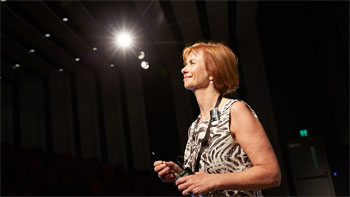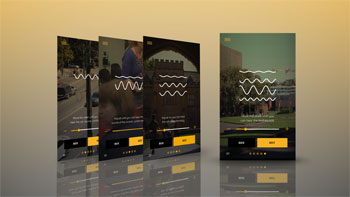Professor Jennie Brand-Miller Restoring Confidence with Cochlear

Discover Your Unique Hearprint
More than 3.6 million Australians are suffering from some form of hearing loss, but many will wait months or even years before seeking professional help.
To try and shorten the time it takes for people to take action, Cochlear has launched a content series featuring new audio tool, Hearprint, to raise awareness of the impact and prevalence of hearing impairment in Australia.
Jennie Brand-Miller, whose story is the first piece of content that is calibrated to the viewer's unique Hearprint, is one example of how Cochlear is changing the lives of people with hearing loss.
As Professor of Human Nutrition at the University of Sydney, Jennie took the concept of the Glycaemic Index to the world after living with progressive hearing loss for more than 20 years.
'Before the implant, it was like being given something to read every day that is in font size five," she said. 'You could do it, but it would be tough to do it for eight hours a day. You end up missing out on so much."
Jennie credits being fitted with a Cochlear implant as one of the pivotal moments in her career.
The Hearprint has been designed in consultation with audiologists and sound engineers and works by adjusting audio frequencies to accommodate individual Hearprints. It then calibrates online content to the viewer's ears.
'No two people hear the world the same," explains Janet Menzies, General Manager – Cochlear Australia and New Zealand. 'The new Hearprint tool helps Australians to visualise their unique Hearprint while drawing attention to the fact that a one-size-fits-all hearing aid solution isn't necessarily the right option for everyone."
Unlike hearing aids, which simply turn up the volume for all sounds around the wearer, Cochlear implants accommodate an individual's unique hearing needs by recalibrating their ears to the world around them to restore their hearing.
Cochlear implants compensate for damaged parts of the inner ear, and work to provide effective, long-term solutions for people with moderate to profound hearing loss. Jennie saw her hearing restoration as a new beginning and wishes to inspire others to recover what they might be missing by discovering their own Hearprint.
Discover your unique Hearprint and watch Jennie's story in full at www.hearprint.com
 Interview with Professor Jennie Brand-Miller
Interview with Professor Jennie Brand-Miller
Question: What is Hearprint?
Professor Jennie Brand-Miller: Cochlear has launched a content series featuring new audio tool, Hearprint, to raise awareness of the impact and prevalence of hearing impairment in Australia. Jennie Brand-Miller, whose story is the world's first piece of content that is calibrated to its viewer's unique Hearprint, is one example of how Cochlear is changing the lives of people with hearing loss.
Question: How does the Hearprint product work?
Professor Jennie Brand-Miller: The Cochlear Hearprint has been designed in consultation with audiologists and sound engineers and works by adjusting audio frequencies through series of user inputs. It then calibrates online content, tailoring the sound to the listener's unique hearing ability.
Question: Can you talk about the creation of the Hearprint product?
Professor Jennie Brand-Miller: Every day, millions of Australians are faced with varying degrees of hearing impairments, many of which are in denial that they even have an issue. To help people recognise that they may not be hearing to the best of their ability, Cochlear wanted to turn every video on the Internet into a chance to realise how a tailored hearing solution could impact your life. The hope for Heaprint is that it will encourage people to take that first step and talk to a professional about the best solution for them.
Question: Are you able to tell us about your own hearing story?
Professor Jennie Brand-Miller: To my knowledge, my hearing was normal as a young child. I learned to speak and listen well. I was a good student. When I was about 14, I noticed that my friends could hear things that I couldn't hear at all (like my mother calling). A hearing test showed I had a mild loss. I was prescribed a hearing aid but didn't wear it. But it progressed to a moderate loss quickly. I remember missing most of what was said when I attended a play at the age of 22. By the time I was 26, I had 2 hearing aids. I needed more and more powerful ones, until the age of 36 when one ear went profoundly deaf. Life got really tough. Ten years went by before I decided that I should investigate a cochlear implant in the deaf ear. I qualified which I was so pleased about as it made so much difference. I describe like to describe it as jump leads to a flat battery. I had the implant in one ear and the hearing aid in the other. It boosted my confidence, and suddenly I was proud of my hearing loss and what I could do, despite my deafness. I now have two implants (one in each ear) and for the most part, no one can tell I am deaf.
Question: What advice do you have for the 3.6 million Australians living in denial about their hearing loss?
Professor Jennie Brand-Miller: Swallow your ego. Get tested. Get aided. If you qualify for a cochlear implant, count yourself lucky. Be brave… and get on with life.
Interview by Brooke Hunter
MORE



